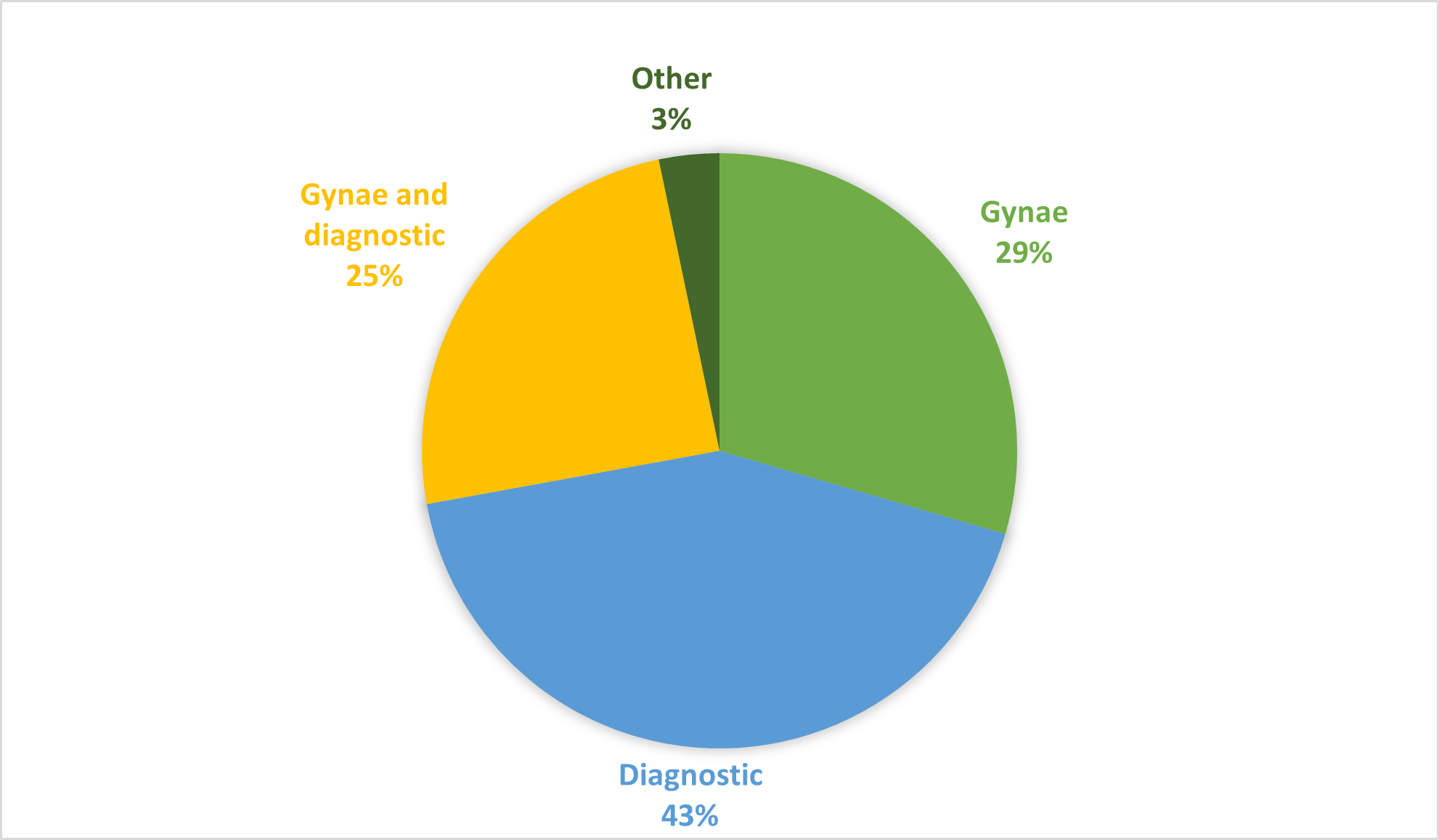BAC Membership Survey 2025 results
Dr Martina Munonyara - Consultant Cytopathologist at Guy’s and St Thomas’ Hospital, London and BAC Membership Lead
Introduction
In December 2024, the BAC emailed an online survey for members and non-members with the aim of collating responses which would help influence BAC strategic policy over the next 24 months. This included collecting responses valuable for improving the website, planning future meetings, webinars and training events. The survey consisted of 46 questions and included both open and closed-end questions. Most questions required mandatory responses, and others were optional. This blog article is a summary of the survey results.
Respondents
A total of 63 respondents completed our survey age ranging between 25 - 65 plus years old. Those who were members formed 57/63 (98%) respondents. Most respondents were Consultant BMS or Histopathologists (44%) closely followed by BMS (43%) who were the next largest group of respondents.
Most respondents said they focused on diagnostic cytopathology (Figure 1). The next largest group of respondents focused on gynaecological cytology, closely followed by those carrying out both gynaecological and diagnostic. The other category included respondents who had or still have a focus in cytopathology but are now involved with other pathology disciplines such as andrology and microbiology.
Results
1. Membership engagement and value for money:
KEY POINTS:
|
There are multiple reasons respondents stated they joined the BAC. This included 1) to keep up to date on new developments, 2) to access valuable resources such as webinars and access specific cytology training, and 3) to engage and network with like-minded people.
Most respondents 40/46 (87%) felt the membership fees overall were reasonable to very reasonable. The remaining respondents: 5/46 (11%) were neutral and 1/46 (2%) felt it was unreasonable. The majority felt it was excellent value for money (48%) with the remaining respondents rating it good (38%) and fair value (13%). No one specified membership was poor value.
Members valued the educational resources, access to our events and updates to cytology professional developments the most.

Figure 1. The area of cytopathology which respondents (n=61) focus on.
2. Professional Development and Education
KEY POINTS:
|
Most respondents said they have attended ASM and spring tutorial meetings, which most (74%) agreed good to excellent educational content. Some respondents said they preferred ASM/AGMs to remain in-person.
All participants stated the resources offered by the BAC met their professional needs rated well to excellent (77%). The remaining participants were neutral in their responses.
3. Website and Communication
KEY POINTS:
|
Respondents felt the monthly newsletter is a valuable line of communication which most respondents felt it to be emailed at the right frequency (91%). The newsletter was stated to be an effective means of communication to gain information on professional updates, webinars, meetings and to view the image of the month.
Most people accessed the BAC website (61%) monthly with fewer accessing weekly (16%) or daily (4%). Most (82%) felt the BAC website informed the latest updates in cytopathology.
4. Social Media Engagement
KEY POINTS:
|
Email was the most preferred communication from the BAC (80%), rather than website (16%) and social media (4%).
Just under half the respondents (46%) follow the BAC on social media via LinkedIn, X or BlueSky (figure 2). The other category included Instagram. Respondents who follow the type of content which they would like to see more of include educational articles, research and publication updates, vacancies and events promotion

Figure 2. Social medial platforms used by respondents (n=51) to engage with BAC updates (Q34).
5. Areas for Improvement:
- Website Modernisation (Q14): 52 (83%) respondents suggest there should be improvement in the website search tools and access to a resource library.
- Activities and features would like to see more of (Q31): Respondents suggested they would like BMS-led topics on preparation techniques and technical skills including staining troubleshooting, rare and interesting case studies, updates on reporting systems, advice with the specialist portfolio (IBMS DEP Diagnostic Cytopathology) and exam teaching.
- Social media strategy (Q36): There was a low response rates for content preferences, 25 (40%) respondents skipped this question highlighting the need to improve engagement via social media.
- Department webinar awareness (Q22): 52/63 (83%) respondents were unaware the BAC can host case-based webinars for their departments.
Conclusion
The survey has been informative in highlighting the strengths of the BAC notably the loyalty of our members, the quality of the educational content of our events, and the resources meeting the professional needs of our members. Respondents were satisfied with the current pricing and value for money of the membership fees, and the majority prefer the monthly newsletter for regular communication for cytology updates.
Areas of improvement include suggestions to modernise the current website and potential educational topics. We have already taken this on board with the website platform recently updated and the introduction of monthly slide clubs. Future developments include improvements to SCAN and access to recorded webinars and events. The feedback also emphasised the need for a strategy to improve social media engagement, as just less than half of respondents do not follow the BAC on social media platforms.
Lastly, we would like to thank all 63 participants who took their time to complete our survey. Your feedback helps drive progress to deliver a cytopathology society for you.
